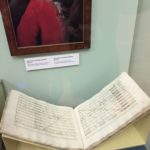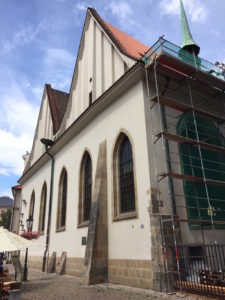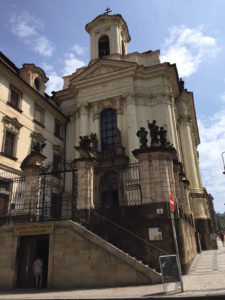
Our only excursion today was to the Lobkowicz Palace.
The Lobkowicz family can trace their roots to the 14th century. They have survived the Thirty Years War, the fall of the Holy Roman Empire, the Austro-Hungarian Empire, the Nazis, and the Communists.
In the process they became patrons of the arts and amassed one of the most impressive collections of art in Europe.
The highlight for me was the original manuscript of Mozart’s reorchastration of Handel’s Messiah, written in Mozart’s own hand.
The Lobkowicz family provides a nice metaphor for for the Church. They have lived under numerous political systems and rulers, survived them all and have prospered, and in the process they elevated the culture in which they have lived. Continue reading “Reformation Tour—Day 4”




